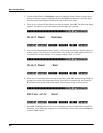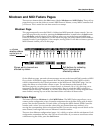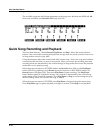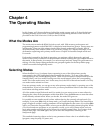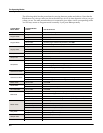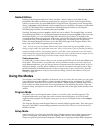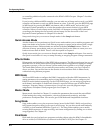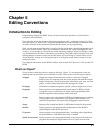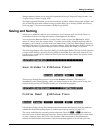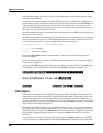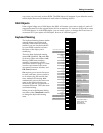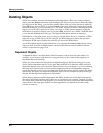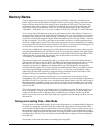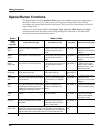
5-2
Editing Conventions
Object Type and ID
Velocity maps Factory-preset or user-programmed curves that affect the K2661’s
response to, and MIDI transmission of, attack velocity values.
Pressure maps Factory preset or user-programmed curves that affect the K2661’s
response to, and MIDI transmission of, pressure (aftertouch) values.
Intonation tables Factory preset or user-programmed tables that affect the intervals
between the twelve notes of each octave.
Master tables The values that are set for the global control parameters on the
Master-mode page, as well as the settings for the parameters on the
CHANNELS page in MIDI mode, and the programs currently assigned to
each MIDI channel.
Fader tables MIDI Controller assignments defined on the MIDI Faders pages.
Name tables Contains a list of dependent objects needed by the other objects in a file at
the time the file was saved.
Macros List of disk files to be loaded into the K2661’s memory at start-up time.
Object Type and ID
The K2661 stores its objects in RAM using a system of ID numbers that are generally organized
into banks of 100. Each object is identified by its object type and object ID; these make it unique.
An object’s type is simply the kind of object it is, whether it’s a program, setup, song, or
whatever. The object ID is a number from 1 to 999 that distinguishes each object from other
objects of the same type. For example, within the 200s bank, you can have a setup, a program,
and a preset effect, all with ID 201; their object types distinguish them. You can’t, however, have
two programs with ID 201.
ROM (factory preset) objects have ID numbers in a number of banks. When you save objects that
you’ve edited, the K2661 will ask you to assign an ID. If the original object was a ROM object,
the K2661 will suggest the first available ID. If the original object was a RAM object, you’ll have
the option of saving to an unused ID, or replacing the original object.
Objects of different types can have the same ID, but objects of the same type must have different
IDs to be kept separate. When you’re saving an object that you’ve edited, you can assign the
same ID to an existing object of the same type, but if you do, the new one will be written over
the old one. For example, if you assign an ID of 1 to a program you’ve edited, the K2661 will ask
you if you want to “replace” the ROM program currently stored with that ID. We’ll discuss this
further in Saving and Naming on page 5-3.
Many parameters have objects as their values—the VelTouch parameter on the Master-mode
page, for example. In this case, the object’s ID appears in the value field along with the object’s
name. You can enter objects as values by entering their IDs with the alphanumeric pad. This is
especially convenient for programs, since their ID numbers are the same as their MIDI program
Object Type Object ID Object Name
Program 201 Hot Keys
Setup 404 Silicon Bebop
Velocity Map 1 Linear
Sample 3 Hey Moe



